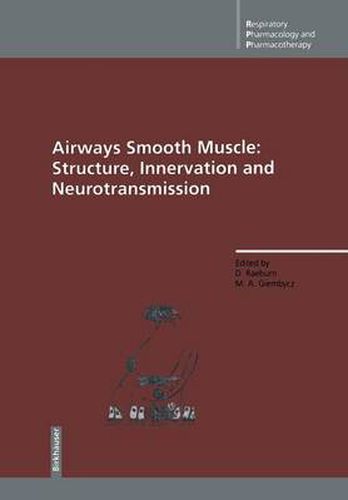Readings Newsletter
Become a Readings Member to make your shopping experience even easier.
Sign in or sign up for free!
You’re not far away from qualifying for FREE standard shipping within Australia
You’ve qualified for FREE standard shipping within Australia
The cart is loading…






This title is printed to order. This book may have been self-published. If so, we cannot guarantee the quality of the content. In the main most books will have gone through the editing process however some may not. We therefore suggest that you be aware of this before ordering this book. If in doubt check either the author or publisher’s details as we are unable to accept any returns unless they are faulty. Please contact us if you have any questions.
Many factors may influence the release of neurotransmitters from airway nerves [1]. This is likely to be important in physiological control of airway functions and may be particularly relevant in airway diseases, such as asthma and chronic obstructive pulmonary disease (COPD). Neural elements in airways interact in a complex manner and the activation of certain neural pathways may profoundly influence the release of transmitters from other neural pathways. Similarly inflamma tory mediators released from inflammatory cells in the airways may also modulate neurotransmitter release. There are marked differences be tween species in airway innervation and in neuromodulatory effects and, wherever possible, studies in human airways have been emphasised, although information on neuromodulation in human airways is some what limited at present. Release of neurotransmitters from nerve terminals occurs via a Ca2+ dependent secretion evoked by a nerve action potential, but may also be evoked experimentally by a high extracellular K + concentration which directly depolarises the nerve terminal membrane. Modulation refers to the alteration of neurotransmitter release, which may either be increased (facilitation) or reduced (inhibition) by the action of a particular agent, thus changing the magnitude of the neurally-mediated response. Such agents would normally act on receptors on the nerve terminal which are referred to as pre-junctional (or presynaptic) receptors, in contrast to post-junctional (or post-synaptic) receptors located on the target cells which are influenced by that particular transmitter.
$9.00 standard shipping within Australia
FREE standard shipping within Australia for orders over $100.00
Express & International shipping calculated at checkout
This title is printed to order. This book may have been self-published. If so, we cannot guarantee the quality of the content. In the main most books will have gone through the editing process however some may not. We therefore suggest that you be aware of this before ordering this book. If in doubt check either the author or publisher’s details as we are unable to accept any returns unless they are faulty. Please contact us if you have any questions.
Many factors may influence the release of neurotransmitters from airway nerves [1]. This is likely to be important in physiological control of airway functions and may be particularly relevant in airway diseases, such as asthma and chronic obstructive pulmonary disease (COPD). Neural elements in airways interact in a complex manner and the activation of certain neural pathways may profoundly influence the release of transmitters from other neural pathways. Similarly inflamma tory mediators released from inflammatory cells in the airways may also modulate neurotransmitter release. There are marked differences be tween species in airway innervation and in neuromodulatory effects and, wherever possible, studies in human airways have been emphasised, although information on neuromodulation in human airways is some what limited at present. Release of neurotransmitters from nerve terminals occurs via a Ca2+ dependent secretion evoked by a nerve action potential, but may also be evoked experimentally by a high extracellular K + concentration which directly depolarises the nerve terminal membrane. Modulation refers to the alteration of neurotransmitter release, which may either be increased (facilitation) or reduced (inhibition) by the action of a particular agent, thus changing the magnitude of the neurally-mediated response. Such agents would normally act on receptors on the nerve terminal which are referred to as pre-junctional (or presynaptic) receptors, in contrast to post-junctional (or post-synaptic) receptors located on the target cells which are influenced by that particular transmitter.